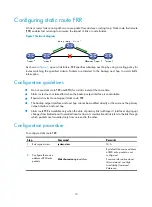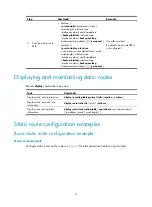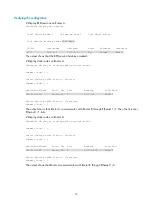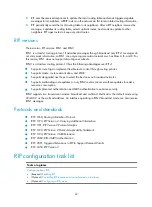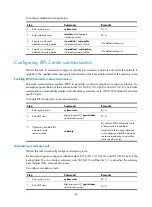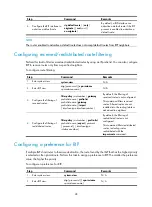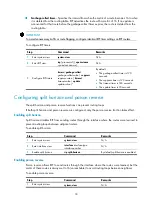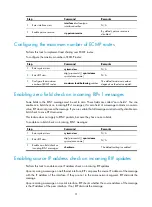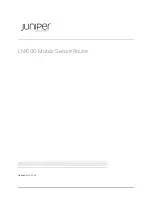
22
2.
RIP uses the received responses to update the local routing table and sends triggered update
messages to its neighbors. All RIP routers on the network do this to learn latest routing information.
3.
RIP periodically sends the local routing table to its neighbors. After a RIP neighbor receives the
message, it updates its routing table, selects optimal routes, and sends an update to other
neighbors. RIP ages routes to keep only valid routes.
RIP versions
There are two RIP versions, RIPv1 and RIPv2.
RIPv1 is a classful routing protocol. It advertises messages through broadcast only. RIPv1 messages do
not carry mask information, so RIPv1 can only recognize natural networks such as Class A, B, and C. For
this reason, RIPv1 does not support discontiguous subnets.
RIPv2 is a classless routing protocol. It has the following advantages over RIPv1:
•
Supports route tags to implement flexible route control through routing policies.
•
Supports masks, route summarization, and CIDR.
•
Supports designated next hops to select the best ones on broadcast networks.
•
Supports multicasting route updates so only RIPv2 routers can receive these updates to reduce
resource consumption.
•
Supports plain text authentication and MD5 authentication to enhance security.
RIPv2 supports two transmission modes: broadcast and multicast. Multicast is the default mode using
224.0.0.9 as the multicast address. An interface operating in RIPv2 broadcast mode can also receive
RIPv1 messages.
Protocols and standards
•
RFC 1058,
Routing Information Protocol
•
RFC 1723,
RIP Version 2 - Carrying Additional Information
•
RFC 1721,
RIP Version 2 Protocol Analysis
•
RFC 1722,
RIP Version 2 Protocol Applicability Statement
•
RFC 1724,
RIP Version 2 MIB Extension
•
RFC 2082,
RIPv2 MD5 Authentication
•
RFC 2091,
Triggered Extensions to RIP to Support Demand Circuits
•
RFC 2453,
RIP Version 2
RIP configuration task list
Tasks at a glance
:
•
(Required.)
•
(Optional.)
Controlling RIP reception and advertisement on interfaces
•
(Optional.)



